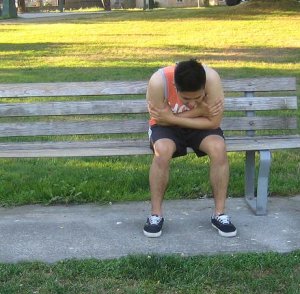A pulled trapezius muscle is caused by accidents such vehicular accidents and colliding into another player during sports. The trapezius is one of the large muscles that ranges from the occipital bone to the lower thoracic vertebrae and to the shoulder blade. It functions in moving the scapula and provide support to the arm.
Symptoms of a pulled trapezius
- Difficulty in moving the head or shoulders. The function of the trapezius is to provide support for the head and when it is injured, it results to difficulty with movement.
- Muscle spasms due to lack of supply of blood and stiffness of the affected area.
- Pain in the neck and shoulders. Oxygen breaks up lactic acid and when there is insufficient supply of oxygen, there is accumulation of lactic acid that result to pain. The pain can be severe, stinging or a feeling that the muscles are tied into knots.
- Tingling sensation can be felt in the arms due to constricted muscle fibers.
Difficulty in moving the head or shoulders. - Fatigue
- Loss of concentration
- Sleeplessness
- Headache at the back of the head
Treatment
- Take plenty of rest. Avoid activities for at least 24 -72 hours to the condition from worsening.
- Immobilize the trapezius by wrapping it against a splint to prevent unnecessary movements. Another alternative is wearing a soft brace to immobilize the neck and prevent unnecessary movements that can worsen the condition.
- Apply an ice pack on the affected area for at least 20 minutes at a time, remove and wait for 2 hours and reapply to lessen the pain and swelling. The cold stimulates the flow of fluids which carry important nutrients needed by the damaged tissues of the affected area. Lymph fluids also eliminate wastes from the cells and tissues of the body. Apply cold on the area at least 4-5 times every day on the first 24-72 hours after the injury.
- Elevate the affected area such as the back and shoulder slightly in an upright position when sleeping. Utilize several pillows behind the back so that it is propped at a 30-45-degree angle. Elevating the area increases the circulation of blood in the area and promote fast healing of the condition.
- Take the prescribed over-the-counter pain medications such as paracetamol to lessen the pain and inflammation.
- Take a warm bath mixed with Epsom salt to relax the pulled trapezius muscle, lessen the spasms of muscles, soreness and stiffness.
- Perform gentle exercises to prevent the injury from reoccurring.
Disclaimer / More Information
The material posted on this page on a pulled trapezius muscle is for learning purposes only. Learn to recognize and manage muscular injuries including a pulled trapezius muscle by taking a first aid and CPR class with one of our training providers.

